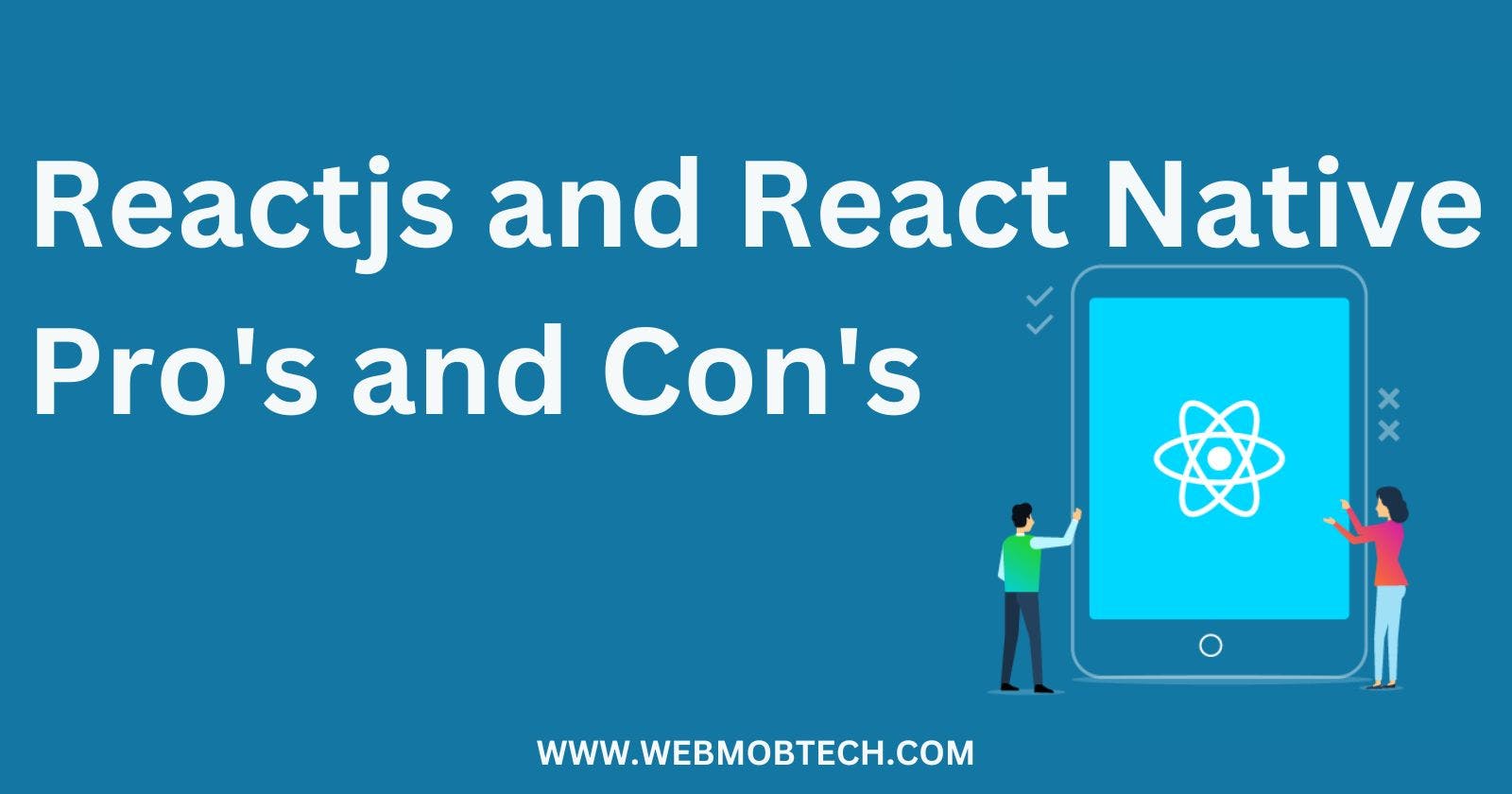Table of contents
React and React Native are two popular technologies in software development. React is a JavaScript library for building user interfaces, while React Native is a framework for building cross-platform mobile applications. While Facebook developed both technologies, Facebook developed both technologiesFacebook developed both technologiesFacebook developed technologies with different purposes and strengths and weaknesses. This article will explore the differences between React and React Native and their pros and cons.
React js
React is a JavaScript library for building user interfaces. It was developed by Facebook and released in 2013. React is popular for its component-based architecture and ability to create dynamic and interactive user interfaces. React is used for building web applications and can be used with other libraries and frameworks such as Redux, Angular, and Vue.
Pros
1) Component-based architecture: React is designed to work with components, which makes it easy to build complex user interfaces. Developers can create reusable components and use them across different parts of applications.
2) Virtual DOM: React uses a virtual DOM to optimize the performance of web applications. The virtual DOM is a lightweight representation of the actual DOM, which makes it faster to update the user interface.
3) Large Community: React has a large and active community of developers, which means that a wealth of resources and support is available for developers who use React.
4) Performance: React is known for its fast performance, which makes it a good choice for building web applications that require high performance.
Cons
1) Learning Curve: React can have a steep learning curve, especially for developers who are new to web development.
2) JSX: React uses JSX, a syntax extension that allows developers to write HTML-like code within their JavaScript files. While JSX can make the code more readable, it can also be a barrier to entry for unfamiliar developers.
React Native
React Native is a framework for building cross-platform mobile applications. It was also developed by Facebook and released in 2015. React Native allows developers to build mobile applications for iOS and Android using JavaScript and React.
Pros
1) Cross-platform development: React Native allows developers to build mobile applications for both iOS and Android using the same codebase. This can save time and effort compared to building separate applications for each platform.
2) Native performance: React Native applications are compiled into native code, meaning they can have performance similar to native applications.
3 Hot Reload: React Native has a "hot reload" feature, which allows developers to see the changes they make to the application in real-time.
4) Large Community: React Native has a large and active community of developers, which means there is a wealth of resources and support available for developers who use React Native.
Cons
1) Limited functionality: React Native doesn't provide all the functionality in native mobile development. Some features may require native code or additional libraries.
2) Debugging: Debugging React Native applications can be more challenging than debugging native applications.
3) Performance: While React Native has native performance, it may not be as fast as native applications in some cases.
Conclusion
React js vs React Native, here are both powerful technologies that are widely used in the world of software development. React is a JavaScript library for building user interfaces, while React Native is a framework for building cross-platform mobile applications.
The choice between React and React Native depends on the project's specific requirements. If the project requires building a web application, then React would be the better choice. If the project requires building a mobile application for iOS and Android, React Native would be the better choice. Both React and React Native have large and active communities, which means that there is a wealth of resources and support available for developers who use them.
